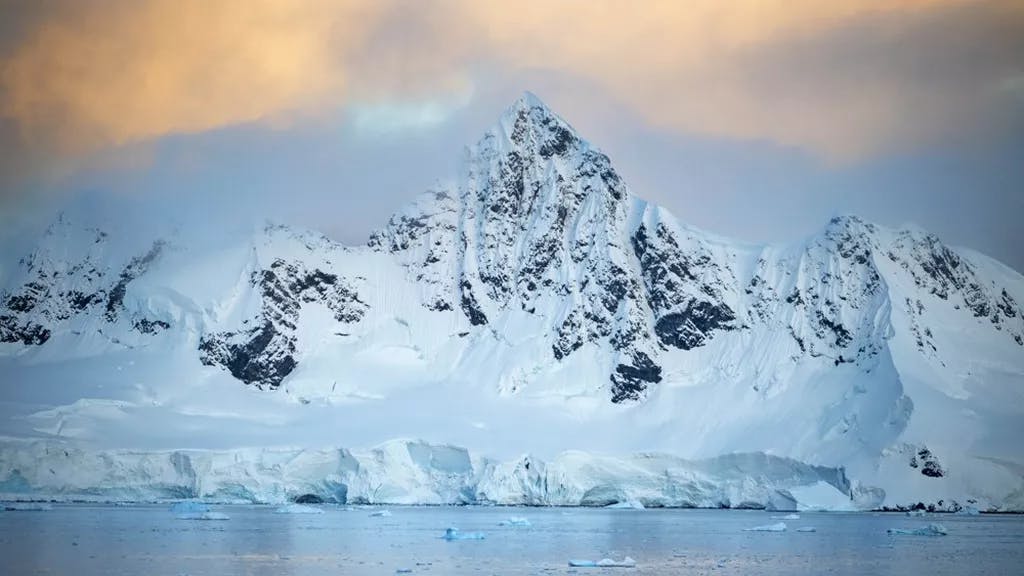Cryosphere: what's the focus of a new international summit?
Unprecedented heatwaves and record temperatures have led to devastating wildfires and droughts in many parts of the world over recent months. The cryosphere - the complex mix of snow, ice caps, glaciers, sea ice and permafrost- is suffering huge losses at both the North and South Pole as well as at high altitudes, to the potential point of no return.
A new international event, the One Planet-Polar Summit scheduled for November 8-10 in Paris, will be hosted by President Macron. Bringing together key experts- such as scientists, indigenous peoples, NGOs, local communities, explorers, operators as well as world leaders and key decision-makers, the Summit aims to discuss action on how to address the formidable challenges facing these icy regions, which make up around 10% of the Earth's surface.
In particular, the fundamental importance of the cryosphere will be highlighted: its role in regulating global temperatures; its vast white expanses that act as a natural shield, reflecting part of the sun's energy back into space (Albedo effect); the ice caps and glaciers that act as reservoirs for 70% of the Earth's fresh water.
The scientific community has been sounding the alarm on the accelerating pace of ice loss: a recent study revealed the shrinking of the West Antarctic ice shelves, with sea ice surrounding Antarctica reaching its lowest ever winter level just now. In the Arctic, sea ice reached its sixth-lowest summer level.
According to the Intergovernmental Panel on Climate Change (IPCC), glaciers under 3,500 metres in the Alps and 5,400 metres in the Andes will have disappeared by 2100. Globally, half of all mountain glaciers will no longer exist, even if we reach the target of reducing emissions to keep global warming to just 1.5°C. The "eternal snows of Kilimanjaro" will unfortunately be a thing of the past in 15 years.
The rapid degradation of polar and mountain ice will have potentially disastrous impacts on the entire planet. Two billion of us depend on mountain water. Billions of people will be affected by water shortages, rising sea levels (estimated at an average rise of 1 metre by 2100), flooding and other extreme weather phenomena. Increasingly numerous coastal populations and Arctic communities are on the front line.
So what can we expect from such a Summit and what immediate solutions and actions could it propose?
Jointly supporting adaptation efforts and the importance of precaution
Scientists unanimously agree that reducing greenhouse gas emissions is the key priority for the cryosphere. But two other actions are also urgently needed. Firstly, it is important to develop collaborative strategies to strengthen the resilience of land and marine areas. For polar marine areas, this means drastically reducing industrial fishing, tourism and shipping activities, which is having an impact on these unique ecosystems.
Secondly, a paradigm shift based on the precautionary principle is needed when it comes to the cryosphere. Vulnerable ecosystems need to be strongly protected through marine protected areas.
Financing our capacity to predict
The cryosphere is not only precious due to the vital services it provides, but it is also crucial for the unique scientific data it provides. The layers of ancient ice provide the secrets of our past climates, which are crucial to aid understanding for the future. It is this ice memory that we urgently need to preserve for future generations of scientists.
There is still so much we are learning about these icy regions, and the scale and speed of changes in the cryosphere are almost happening faster than we can keep up with. This is why we need to increase our capacity to assess possible tipping points and help guide our adaptation strategies.
It is imperative to secure appropriate funding not only in France, but also at the European and international level, to carry out collaborative research projects. The governments attending this summit must make an urgent commitment to adequately resource this scientific cooperation.
France must set an example by upgrading its support for polar research. The first French Polar Strategy was released in April 2022, and it is important to make it a reality by allocating the necessary funding to implement the Strategy. A cross-party bill on this issue has already been put forward by a number of French MPs.
Finally, this international summit will only be meaningful if it integrates the traditional knowledge and recognises the rights of Indigenous peoples. Living in regions particularly exposed to climate change, these people that hold key knowledge, they must participate in the design and implementation of adaptation strategies.
At a time when we are likely to reach tipping points very soon for the cryosphere, this Summit must strengthen working together, through both research and implementing precaution-based activities to secure a safe future for our children and our planet.



